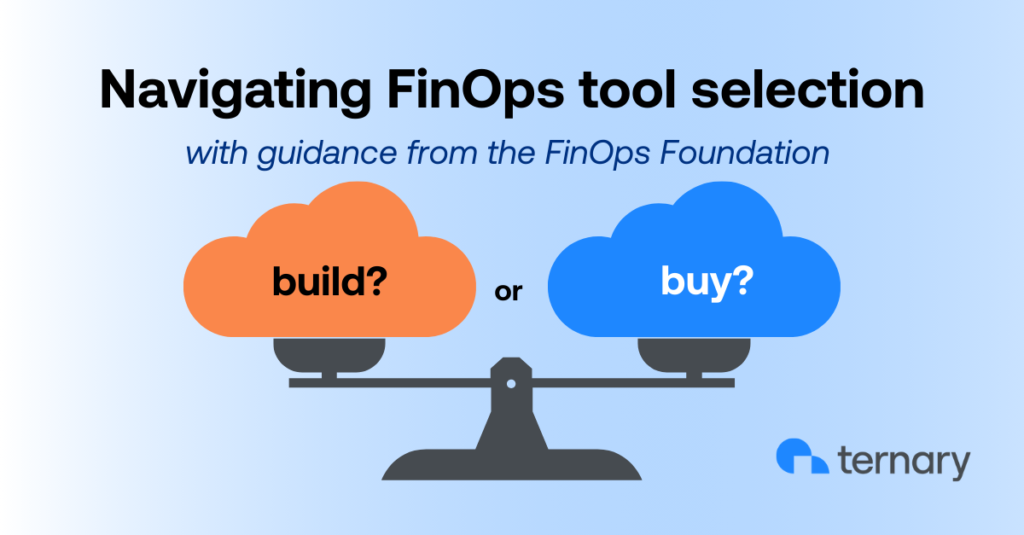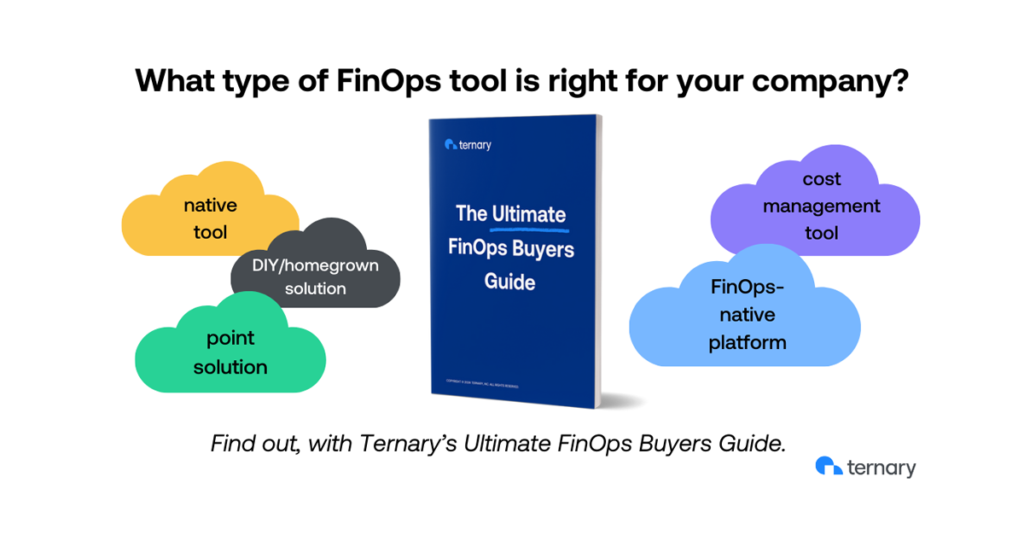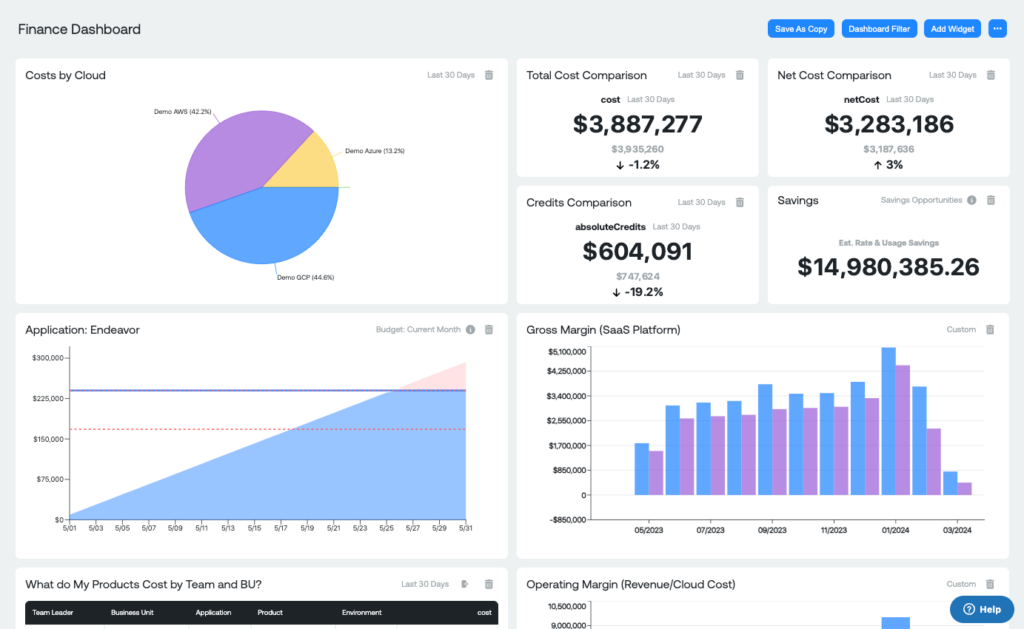FinOps is a dynamic discipline that necessitates a continuous cycle of improvement across people, process, and technology. This iterative approach ensures that your organization can effectively manage cloud costs and achieve optimal financial performance.
While the tools necessary to support a FinOps practice are crucial, selecting the right ones presents a challenge. The massive volumes of data involved, the constantly changing cloud provider offerings, the diverse needs of stakeholders, and the extensive selection of available tools are just a few of the factors that increase complexity.
To help you on your technology and services selection journey, the FinOps Foundation published the “FinOps Tools and Services,” a detailed guide to navigating this complex landscape. The paper underscores the importance of choosing tools that align with organizational needs, offer robust integration capabilities, and provide value for money. The paper also highlights the necessity of vendor support and the ability of tools to scale with the organization.
Here’s a quick summary and guide to help you get the most out of this published research. And at the end, we provide an easy-to-use checklist to guide your tool selection process.
Key findings from the paper
- Understanding organizational needs: The first step in selecting a FinOps tool is a thorough assessment of your organization’s specific requirements. This includes understanding the data you need to manage, the stakeholders involved, and the goals you aim to achieve.
- Evaluating tool capabilities: It is essential to evaluate potential tools against your specific needs. This involves looking at features, functionality, and how well they can handle your data and processes.
- Integration: Seamless integration with existing systems ensures that data flows smoothly across platforms, enabling better decision-making.
- Vendor support: Strong vendor support is vital for addressing issues, receiving updates, and getting the most out of the tool.
- Cost and value: The right tool should offer a good return on investment by enhancing efficiency and reducing costs.
- Scalability: As your organization grows, your FinOps tools should be able to scale accordingly. Scalability ensures that the tool remains useful as your needs evolve.
- Customization: Customizable features allow you to tailor the tool to your specific needs, enhancing its effectiveness.
- User-friendly interfaces: Tools with intuitive interfaces and robust reporting features are easier to use and can provide better insights.
- Regular reassessment: Periodically reassessing the effectiveness of your tools ensures that they continue to meet your needs and can adapt to any changes in your organization.
Guide to the paper’s sections
Introduction
This section introduces the significance of selecting the right tools and services for a successful FinOps practice, emphasizing the continuous improvement of people, processes, and technology.
Cloud Service
Explores how organizations interact with their cloud providers, including direct relationships, resellers, and managed service providers.
FinOps Tools
- Needs-Based Assessment
- Focuses on evaluating organizational needs to determine the most suitable FinOps tools.
- Tool Procurement Process
- Describes the steps for acquiring the right tools, including budgeting, sourcing, and purchasing.
- Tool Integration
- Highlights the importance of ensuring new tools integrate seamlessly with existing systems.
- Build, Buy, Adopt, Integrate
- Discusses the decision-making process between building custom solutions, buying platforms, adopting new tools, and/or integrating them.
- Tool Candidates
- Lists potential tools and solutions that organizations can consider for their FinOps needs.
- Tool Selection Process
- Provides a framework for evaluating and selecting the most appropriate tools based on specific criteria.
- Implementing the Tool
- Covers the steps for deploying the chosen FinOps tools within the organization.
- Enabling Users
- Emphasizes the importance of training and supporting users to maximize tool effectiveness.
- Establishing the Tool
- Guides the initial setup and configuration of the selected tools to ensure they meet organizational requirements.
- Continuous Tooling Evaluation
- Stresses the importance of regularly reassessing and evolving FinOps tools to meet changing organizational needs.
FinOps Services
Describes different models of working with FinOps service providers and the considerations for integrating their services into an organization’s FinOps practice.
Conclusion
Summarizes the key points and stresses the need for continuous assessment and evolution of tools and services to meet the changing needs of the organization.
A focus on building vs. buying
The section “Build, Buy, Adopt, Integrate” is especially useful, as it explores the decision-making process around building a custom solution versus buying an existing platform. The FinOps Foundation advocates for a hybrid approach: purchasing a platform that meets most of your needs and then building custom solutions on top to address your organization’s unique needs. This strategy allows you to leverage the strengths of both approaches, ensuring you get a robust, scalable solution while tailoring it to your specific requirements.
Conclusion
Selecting the right tools for FinOps is a challenging yet crucial task. By understanding your needs, evaluating tool capabilities, ensuring integration, and balancing cost and value, you can choose tools that enhance your FinOps practice. Emphasizing the “Build, Buy, Adopt, Integrate” approach allows you to leverage the strengths of both custom and off-the-shelf solutions, ensuring you have a robust and tailored FinOps toolset.
You can read the full paper on the FinOps Foundation website. Download your copy of Ternary’s Ultimate FinOps Buyers Guide today to discover strategic and technical questions you should be asking vendors as part of your tool evaluation process.
Comprehensive checklist for FinOps tooling strategy
1. Assess organizational needs
- Conduct a needs-based assessment to identify specific FinOps requirements.
- Engage stakeholders to gather input on essential features and capabilities.
2. Establish your procurement process
- Establish a budget for tooling.
- Research potential tools and create a shortlist.
- Conduct a request for proposal (RFP), if necessary.
3. Evaluate tool capabilities
- List essential capabilities such as cost visibility, anomaly detection, and reporting.
- Ensure tools meet these capabilities during the evaluation.
4. Determine integration requirements
- Ensure compatibility with existing systems and workflows.
- Plan for data migration and integration points.
- Test integration in a proof of concept or sandbox environment.
5. Buy and build
- Buy: Prioritize purchasing platforms that meet 80% of your requirements to leverage established functionalities and vendor support.
- Integrate: Combine purchased platforms with minor custom solutions to address specific needs, ensuring a balanced approach.
- Adopt: Implement the new tools as required, focusing on minimizing custom development to save time and resources.
6. Select tools
- Use a scoring system to objectively rank tools.
- Conduct demonstrations and trials of shortlisted tools.
- Select the tool(s) that best meet your organizational goals.
- Consider scalability, user-friendliness, and long-term viability.
7. Implement the tool
- Develop a detailed implementation plan with clear timelines.
- Assign a project manager to oversee the deployment.
- Conduct a pilot phase to test functionality and gather feedback.
- Adjust the implementation plan based on pilot results.
8. Establish the tool
- Perform the initial setup and configuration according to organizational needs.
- Ensure all necessary data is imported and correctly mapped.
- Conduct a final review and obtain approval before going live.
9. Enable users
- Create comprehensive training materials and conduct training sessions.
- Provide ongoing support and resources for users.
- Establish feedback mechanisms to continuously improve tool usage.
10. Regularly review tooling
- Regularly review tool performance and usage metrics.
- Gather feedback from users and stakeholders.
- Adjust configurations and integrations based on feedback.
- Plan for periodic updates and training refreshers.
By following these steps, you can establish a robust FinOps tooling strategy, effectively evaluate and implement tools, and continuously measure their effectiveness in your organization.



